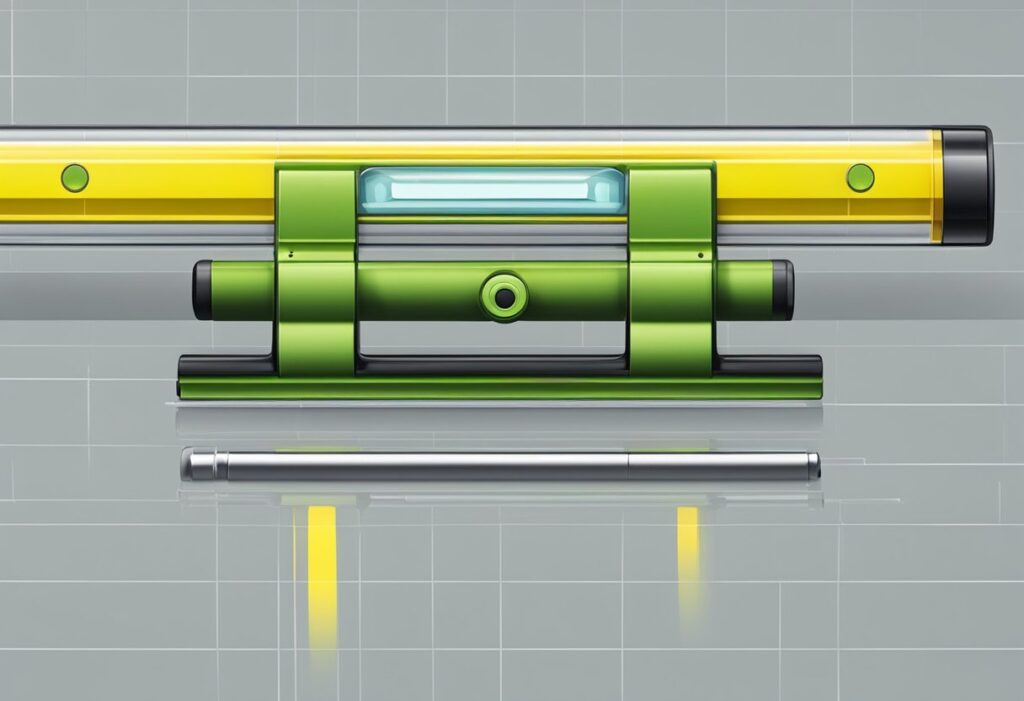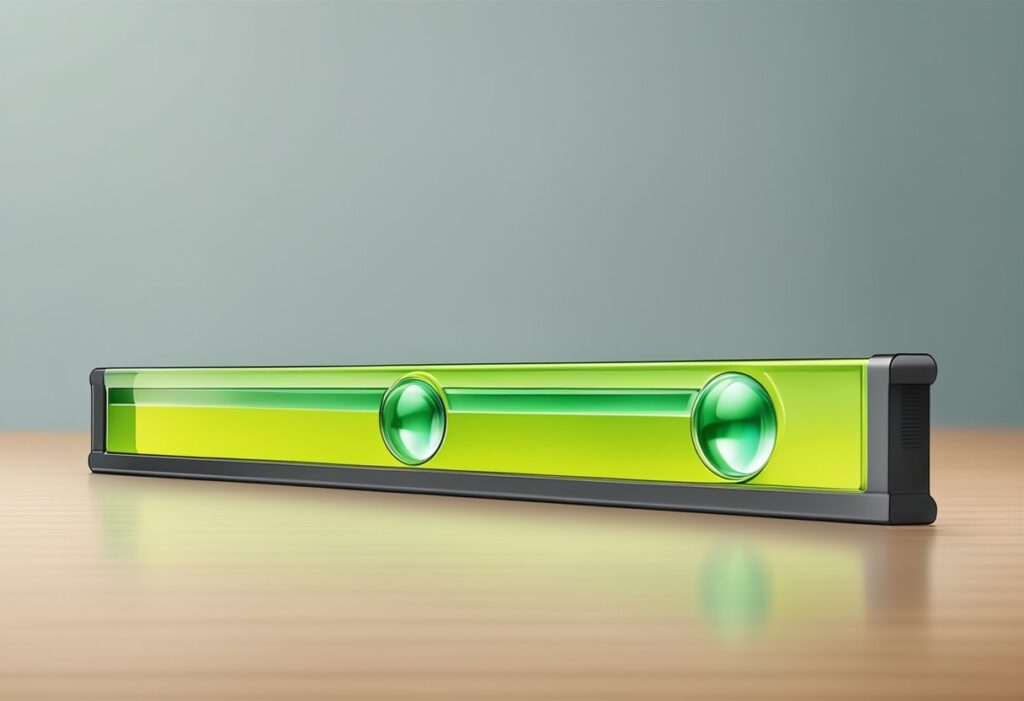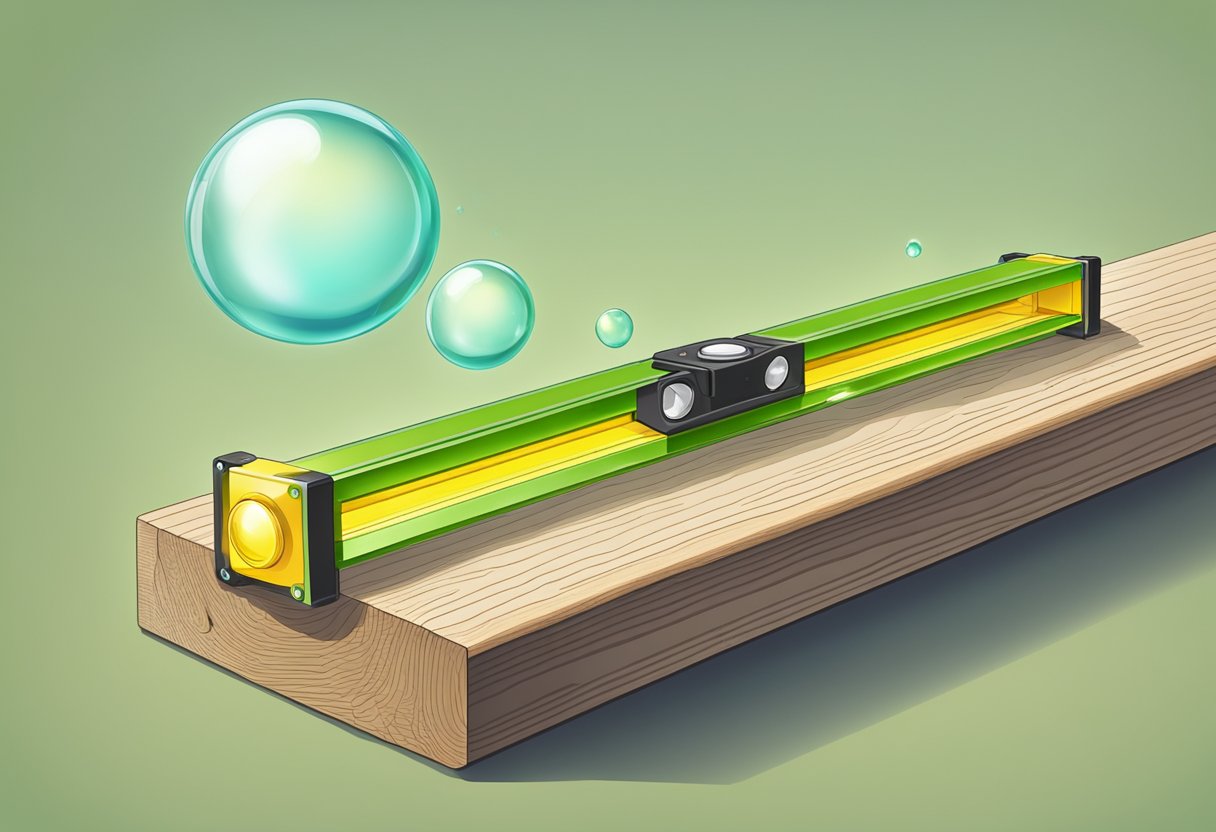Using a spirit level is not only straightforward but also essential for any construction project. Whether building a deck, installing shelves or hanging a picture frame, a spirit level is your trusted companion for ensuring your work is level and plump. It’s a simple tool—just a liquid vial with a bubble inside—that shows if the surface is flat or plump when attached to a straight edge. This straightforward design is made with your comfort and confidence in mind, using a spirit level.
Understanding how to use a spirit level is not just essential; it’s critical to achieving accurate results. The process involves positioning the level on the surface. You want to check and adjust it until the bubble finds its center between the markers of the level. This understanding empowers you to choose the right level for the job and use it properly, ensuring accurate and precise leveling results. Your knowledge and skills at the spirit level will make you feel empowered and confident in your DIY projects. Click here for further information on our site, Ice Age Tools.
Key Takeaways
- Using a spirit level is essential in any construction project.
- Understanding how to use a spirit level is crucial to achieving accurate results.
- Keeping the level and the surface clean is critical for obtaining accurate readings.
Understanding Spirit Levels

Components And Design
A spirit or bubble level is a tool for determining whether a surface is level or plumb. It consists of a body comprising a substance (aluminum, plastic, composite, etc.) and a spirit tube (carrying a liquid, typically an alcohol-based spirit) with an air bubble inside. The spirit tube, which can be straight or curved, is often embedded in the level’s body. The spirit tube’s curved design improves reading accuracy and increases durability compared to its straight version.
Typically, the spirit tube is liquid and air, with a set of two or more vials for storing chemicals. The vials will instantly detect any alteration in the measured surface level, no matter how small. The vial is said to be level or plumb when the bubble within is at the exact middle of the two lines that make up the vial.
Types Of Spirit Levels
Several spirit levels exist, each designed for specific tasks. The standard bubble level is the most common type for general leveling tasks. The line level is a lightweight level intended to join one another, often used for laying bricks or tiles. The post level is a 90-degree angle level, with three vials used to check fence posts for plumb and level simultaneously. The torpedo level is a compact model used in tight spaces, such as when installing kitchen cabinets. Being well-versed in the various sorts and applications of spirit levels is crucial. It helps you select the most suitable one for your project, making you feel adaptable and resourceful.
Composites, metals, and plastics are among the materials that can build the level’s structure. It is wise to weigh the pros and cons of each substance. For instance, aluminum is well-known for being sturdy and lightweight, making it a pleasure to work with. Aluminum, for example, is famous due to its robust construction and low weight, which makes it easier to work with. Although plastic levels must be more sturdy than metal ones, they are more portable and cost less. Levels can also use lightweight but strong composites like fiberglass in their construction.
The most important thing to remember while using a spirit level is to familiarize yourself with its parts and construction. Spirit levels can have various bodies composed of different materials, and each type is purpose-built to achieve a particular goal. Anyone can achieve accurate and precise leveling results by choosing the right level for the job and understanding how to use it properly.
How To Use A Spirit Level
Using a spirit level is essential for anyone who wants to ensure their DIY projects are level and plumb. However, it’s important to remember that safety should always come first. A spirit level is a tool that helps to determine whether a surface is horizontal or vertical. It consists of a vial of liquid with a bubble that moves to indicate whether a surface is level. Here, we’ll go over the three primary aspects of using a spirit level: surface preparation, accurate readings, and understanding the bubble. Always ensure you work on a stable surface and monitor your environment to avoid mishaps. This emphasis on safety will make you feel secure and protected while using a spirit level.
Preparing The Surface
Before using a spirit level, it is essential to ensure that the surface is clean and free from debris that could affect the accuracy of the reading. Kicking dirt and debris off the ground risks damaging the delicate surface. If you’re using gloves, all it takes to get an accurate reading is to brush your hand across the object and level. If you use your level often, remove any accumulated dirt on its edges.
Taking Accurate Readings
Place the tool on the surface you’re leveling to take an accurate reading with a spirit level. Adjust the surface until the bubble inside the vial aligns between the two guideline marks. The same principle applies to vertical testing. To ensure the level makes the necessary adjustments, level it on a level surface and then indicate the bubble’s location. This process ensures that the level is accurate and ready for use.
To ensure the surface is level, check the level at different points using a reliable tool such as the SOLA LSX10 X PRO Aluminum Box Profile Spirit Level with 2 60% Magnified Vials. This method will enhance the surface’s homogeneity over its length. If the surface is not level, adjust it until it is. For example, if you’re leveling a shelf, add shims under one end to raise it to the correct level. The SOLA LSX10 X PRO’s magnified vials make it easier to read measurements accurately, ensuring a precise leveling process.
Interpreting The Bubble
Understanding the bubble’s movement is crucial in using a spirit level. The bubble indicates whether a surface is level or not. If the bubble is in the center of the vial, the surface is level. If the bubble is off-center, the surface is not level. The bubble will move to the highest point, which indicates the angle of inclination of the surface. If the bubble is off-center, adjust the surface until the bubble is in the center of the vial. The further the bubble is from the center, the more the surface is out of level, so it’s crucial to make precise adjustments. This understanding is the secret to precise leveling and will give you confidence in your spirit-level abilities.
Using a spirit level requires preparing the surface, taking accurate readings, and interpreting the bubble. By following these steps, you can ensure that your DIY projects are level and plumb. Remember to check the level at different points along the surface and adjust it until it is level. With practice, you will become more confident using a spirit level and achieve greater precision in your work.
However, common mistakes such as not checking the level at multiple points or misinterpreting the bubble’s position, can lead to inaccurate results. To get the most outstanding results, avoid these common mistakes. For instance, ensuring the surface is clean before the level can lead to accurate readings. Similarly, not checking the level at multiple points can result in a surface that is not consistently level.
Applications Of Spirit Levels

Discover the Versatility of Spirit Levels in Various Applications. From construction and carpentry to DIY and home improvement, spirit levels are your go-to tool for ensuring precision and accuracy in various projects. Their versatility allows you to explore and excel in multiple applications, inspiring creativity and innovation in your projects. This versatility will make you feel inspired and innovative in your construction and DIY projects.
Construction And Carpentry
Spirit levels are essential tools for construction and carpentry projects. They ensure walls, floors, and other surfaces are level and plumb. Carpenters and construction workers also use spirit levels to check that the building’s frames are square and that windows and doors have had enough time to prepare.
DIY And Home Improvement
Spirit levels are also helpful for DIY and home improvement projects. They can ensure that bookcases, photos, and other wall hangings are level, floors are level, and tiles have a proper foundation laid.
Specialized Professions
Recognizing the Role of Spirit Levels in Specialized Professions. Overall, spirit levels are versatile tools essential for many different applications. Whether you are a construction worker, carpenter, or DIY enthusiast, a spirit level is a tool you should have in your toolbox.
Maintaining A Spirit Level
There are a few key things to remember when maintaining a spirit level. By taking care of your spirit level, you can be confident that it will remain accurate and dependable for a long time. If you want to keep your morale high, here are some things you can do.
Cleaning And Storage
One of the most important things you can do to maintain your spirit level is to keep it clean. Dirt and debris can interfere with its accuracy, so it’s important to wipe it down regularly with a clean, dry cloth. You may need to clean your level frequently if you work in a dusty environment.
The advancement of technology has led to the development of electronic and digital levels that provide more accurate readings than traditional bubble levels. These levels use electronic sensors to measure slope and degrees and display the results on a digital screen. They often have additional features, such as the ability to store measurements and the option to switch between different units of measurement. However, traditional levels like the IRWIN Tools 1000 I-beam Level remain popular due to their rugged aluminum I-beam construction, high-contrast vials for clear visibility, and rotating dial vials for easy angle measurements. These features ensure durability and versatility, making the IRWIN Tools 1000 I-beam Level a reliable choice for various tasks.
Calibration And Accuracy Checks
Calibration of your spirit level should ensure its precision regularly. To do this, you must evaluate the level of a level surface, such as a glass window. Adjust the level with the calibration screws if it isn’t level.
In addition to calibration, it’s a good idea to perform regular accuracy checks on your spirit level. You can do this by placing the level flat and checking to see if the bubble is centered. If it’s not, you may need to adjust the level or replace it if it’s defective.
Dealing With Wear And Tear
Over time, your spirit level may experience wear and tear. Damage to the vials or scratches on the glass may be present. To keep the level accurate, you must respond quickly if you see any damage.
Ensure any plastic levels you may have are not deteriorating or yellowing. After being left in the sun for a long time, they may require replacement.
By following these tips, you can ensure that your spirit level remains accurate and reliable for years. Proper maintenance is critical to getting the most precise measurements possible, whether using a carpenter’s level, post level, electronic level, or any other type of level.
Advanced Features And Innovations

Electronic And Digital Levels
The advancement of technology has led to the development of electronic and digital levels that provide more accurate readings than traditional bubble levels. These levels use electronic sensors to measure slope and degrees and display the results on a digital screen. They often have additional features, such as the ability to store measurements and the option to switch between different units of measurement. For instance, the Stabila 37424 – 24-Inch Level, known for its high accuracy and durability, remains a top choice for professionals even amidst these technological advancements, highlighting the importance of having reliable and precise tools in both traditional and modern formats.
Enhanced Visibility And Durability
Some spirit levels now have enhanced visibility features, such as illuminated vials or high-contrast markings, which make reading the level in low-light conditions easier. Specialist coatings can further reinforce and protect the vials from environmental hazards, including the earth’s surface and temperature fluctuations.
Specialized Levels For Unique Needs
Specialized spirit levels are also available for unique needs. For example, some levels have a built-in inclinometer, allowing them to measure angles in addition to levelness. Others have magnetic edges, making them ideal for use on metal surfaces.
Overall, the advancements in spirit-level technology have made them more accurate, durable, and versatile than ever before. A spirit level is a versatile tool that can fulfill the demands of anyone, from professional contractors to do-it-yourself enthusiasts.
Frequently Asked Questions
How Do You Properly Use A Spirit Level For Vertical Alignment?
To use a spirit level for vertical alignment, place the level against the surface you want to check. Adjust the surface until the bubble inside the vial aligns between the two guideline marks. To ensure accuracy, check the level from all directions.
What Are The Steps To Use A Spirit Level On A Wall?
To use a spirit level on a wall, choose the right level suitable for the wall’s length. More extended levels provide better accuracy. Position the level horizontally on the wall, ensuring it makes complete contact. Check the bubble and adjust the position until it falls in the middle of the space marked with the level markers.
Can You Explain How To Measure Slope With A Spirit Level?
To measure the slope with a spirit level, place it on the hill and adjust it until the bubble finds its center between the level’s markers. The number of degrees indicated by the level is the slope of the surface.
What Do The Lines On A Spirit Level Indicate?
The lines on a spirit level indicate the bubble’s position inside the vial. When the bubble is exactly in the middle and the ground is perfectly flat.
What Are The Best Practices For Using A Spirit Level Horizontally?
When using a spirit level horizontally, ensure the level does not fall or otherwise damage the surface under inspection and that the area is free of moisture and dirt. Look at the level from every angle to ensure its accuracy.
Why Is Using A Spirit Level In Construction And Diy Projects Essential?
Using a spirit level is essential in construction and DIY projects to ensure the accuracy and level of surfaces, such as walls, floors, and ceilings. Accurate leveling is critical to the stability and safety of structures and achieving a professional finish.

